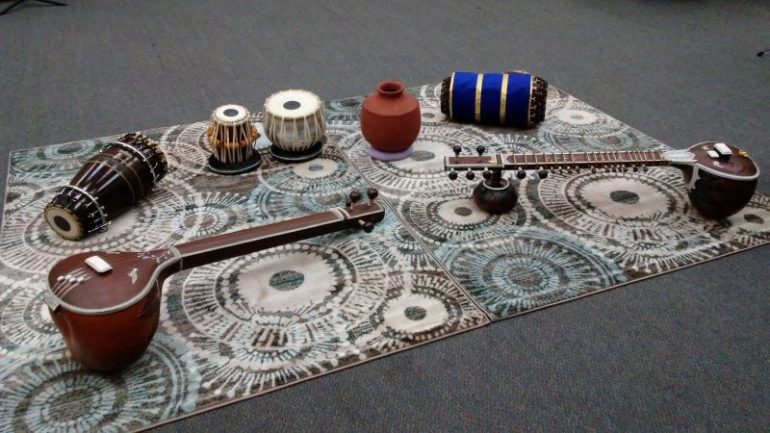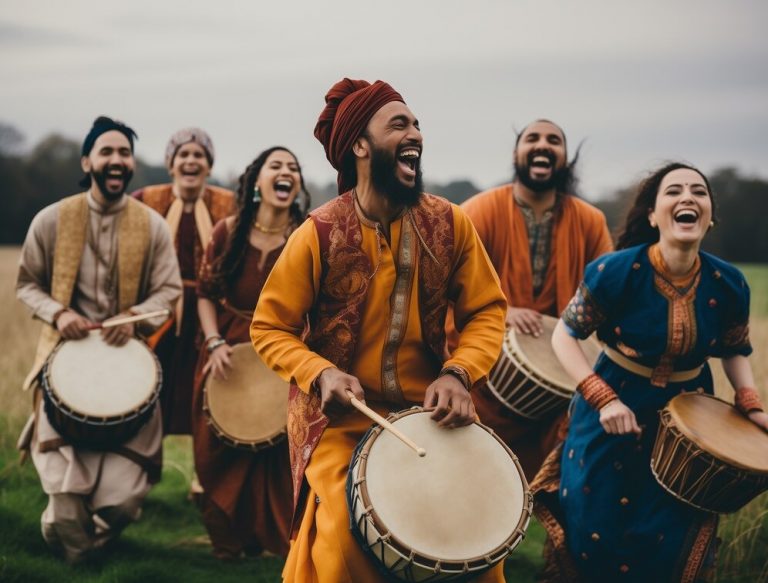As you delve into the world of Indian music, you will quickly discover that it serves as a profound mirror of the cultural diversity inherent in India. This incredible country, home to over a billion people, showcases a rich tapestry of languages, dialects, and ethnic communities, each contributing their unique charm to the vibrant musical landscape. From classical Indian music traditions to modern fusion genres, the soundscape is not just a reflection of melodious notes, but a beautiful representation of diverse cultural expression.
In this article, you’ll gain insights into how Indian music reflects the diversity of Indian culture and captures the essence of its evolving heritage. Prepare to explore how each beat, rhythm, and lyric resonates with the experiences and influences that shape the lives of its people.
Key Takeaways
- Indian music is a profound reflection of the nation’s cultural diversity.
- There are various Indian music traditions, including classical and folk genres.
- Hindustani and Carnatic are two prominent classical Indian music styles.
- Regional diversity manifests in unique folk music forms across India.
- Fusion genres illustrate the global influence on traditional Indian music.
- The ever-evolving musical landscape captures contemporary cultural expressions.
- Indian music serves as a powerful medium for storytelling and cultural identity.
The Roots of Indian Music and Cultural Diversity

The roots of Indian music are deep and complex, intertwined with the cultural fabric of the Indian subcontinent. This rich musical heritage showcases a variety of influences, contributing to the diversity present in traditional Indian music today. Understanding the layers of historical influence on Indian music reveals the ways in which music has evolved and adapted throughout centuries.
Historical Influence on Indian Music
Throughout history, music in India has seen a plethora of influences. Ancient scriptures like the Vedas underscore the significance of music in religious practices, indicating its profound role in society. As time progressed, the Mughal incursions introduced new styles and techniques, blending with existing regional music. This fusion has shaped classical Indian music, including both Hindustani and Carnatic traditions, that reflect the rich tapestry of India’s history.
Traditional Indian Music and Its Various Forms
Traditional Indian music is characterized by a multitude of forms, each telling its own story. From the devotional Bhajans sung in temples to the vibrant Baul songs originating in Bengal, traditional Indian music captures unique cultural expressions. Each region contributes its distinct styles, highlighting the diverse roots of Indian music and preserving the heritage through generations.
Impact of Cultural Diversity on Indian Music
The cultural diversity in Indian music introduces a dynamic interplay of languages, forms, and genres. Various communities across the subcontinent have their own musical narratives, contributing to a rich collection of rhythms and melodies. This diversity resonates deeply, reflecting the varied social contexts in which these musical traditions thrive, and making Indian music a vivid representation of the country’s cultural narrative.
How Indian Music Reflects the Diversity of Indian Culture

Indian music serves as a vibrant tapestry that intertwines various cultural threads, enriching the overall experience of its listeners. Within this musical landscape, classical Indian music plays a pivotal role, with two main traditions: Hindustani music and Carnatic music. Each tradition has its own historical influences and intricacies, while regional diversity in Indian music showcases a plethora of folk styles that reflect local cultures. The fusion of Indian music genres introduces modern interpretations that resonate on a global scale.
Classical Indian Music: Hindustani and Carnatic Traditions
Classical Indian music encompasses two prominent styles: Hindustani and Carnatic. Hindustani music, prevalent in Northern India, is characterized by its improvisational nature and profound emotional expression. Instruments like the sitar and tabla contribute to its unique sound, allowing musicians to convey intricate emotions through their art. On the other hand, Carnatic music, which originates from Southern India, emphasizes rhythmic complexity and structured compositions. The use of instruments such as the veena and mridangam highlights its rich musical texture, making it a distinct embodiment of cultural heritage.
Regional Diversity in Indian Folk Music
Regional diversity in Indian music manifests vividly in folk traditions across the country. Each region boasts its own musical styles, often linked to its historical and cultural narratives. For instance, the Lavani of Maharashtra expresses the vibrancy of life through fast-paced rhythms and lively performances, while the Bhangra of Punjab celebrates agricultural festivals with energetic beats and dance. These forms of Indian folk music not only entertain but also preserve and share local stories, connecting generations and communities.
Fusion of Indian Music Genres and Global Influence
The fusion of Indian music genres exemplifies the adaptability and evolution of this art form. Modern renditions often blend classical Indian music with global influences, producing captivating sounds that appeal across cultural boundaries. Bollywood music, in particular, stands as a prime example of this fusion. It marries traditional melodies with contemporary musical trends, resulting in a diverse auditory experience that has captivated audiences worldwide. This synthesis showcases how Indian music continues to redefine itself while retaining its rich cultural essence.
Some websites are excellent resource for exploring the rich spectrum of Indian music like https://spbala.com/.
This site offers a wealth of information on various genres, artists, and the cultural significance of Indian music, providing a deeper understanding of how this art form reflects the country’s diverse heritage.
| Music Style | Region | Characteristics |
| Hindustani Music | Northern India | Improvisational, emotional, features sitar and tabla |
| Carnatic Music | Southern India | Complex rhythms, structured compositions, employs veena and mridangam |
| Lavani | Maharashtra | Fast-paced rhythms, lively performances |
| Bhangra | Punjab | Energetic beats, festive celebrations |
| Bollywood Music | Pan-Indian | Fusion of traditional and contemporary styles, global appeal |

